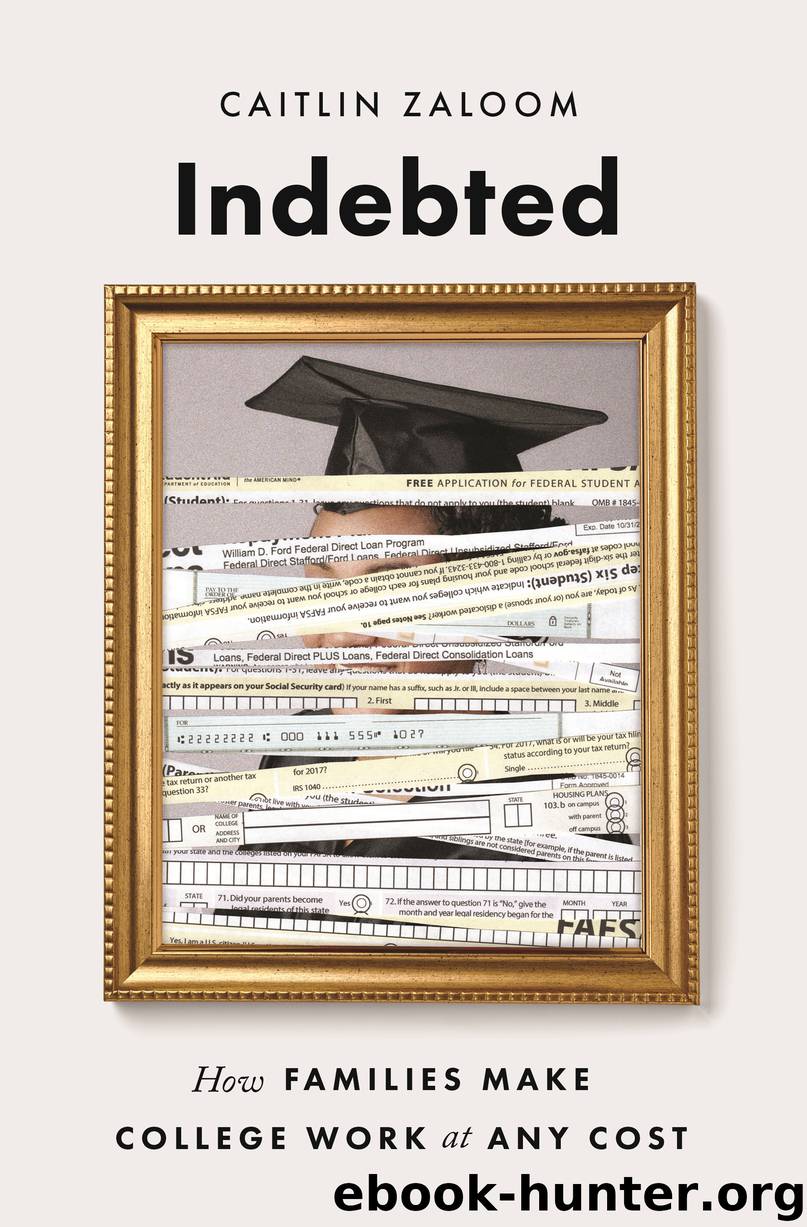Indebted by Caitlin Zaloom

Author:Caitlin Zaloom
Language: eng
Format: epub
Publisher: Princeton University Press
Published: 2019-06-21T16:00:00+00:00
Dangerous Credit
It was during the years Ramona and Stanley were in college, in the 1980s, that the Department of Education began to advance loans over grants for college support. The shift hit lower-income students hardest, and African American students bore the brunt of the change. Drawing on data from the United Negro College Fund, the sociologists Julian B. Roebuck and Komanduri Murty have observed that, in 1980, more than three-quarters of students at black private colleges relied on financial grant aid to attend, with only 4 percent having taken on federal guaranteed loans. Close to half of these students had grown up below the poverty line. By 1987, the number taking on loans had climbed to nearly 50 percent.36 Although lower-income students were the first to be drawn into debt, middle-class students and their families would also be squeezed in the decades to come.
The parent PLUS loan was one of the vehicles by which the federal government shifted the burden of responsibility for paying for college onto middle-class parents. Created by the Department of Education in 1994 and officially called Parent Loans for Undergraduate Students (PLUS), they are specifically designed to help parents pay their expected contribution when their funds fall short and after the family has exhausted all other aid resources. Today the PLUS Loan Program extends loans for 13 percent of full-time dependent undergraduates. Families making use of the program take on an average of $13,000 of debt per year, paying considerably higher interest rates than those for student loans (as of this writing, 7 percent as compared to 4.5 percent for loans to students).37 Payment also begins as soon as a loan is approved rather than being deferred until the student’s graduation. In addition, parents must pass a credit check in order to be awarded these loans, unlike loans to students. PLUS loans therefore tie student’s college prospects to their parents’ credit history, which, for African Americans, reflects their collective history of discrimination in jobs, pay, and wealth accumulation. This historical disadvantage is not considered in the approval process, however; credit is extended based only on an individual’s record.
This means that the Department of Education acts much like a private bank, complete with local branch bankers, in this case universities’ financial aid officers. Parents are not left on their own to make their case for loans. Financial aid officers mediate between the family and the student finance complex in the PLUS loan process, just as they do with verification. They play an important role in informing parents about PLUS loans, providing advice about how to apply and facilitating applications. College aid offices can recommend that a family turn to the Department of Education for a PLUS loan, and they can specify just how much the government agency should approve.
Financial aid offices also explain the lending rules to parents and dispense advice on how to comply and take advantage of them. Pennsylvania State University offers particularly elaborate support, explaining the process on its website and presenting a PLUS worksheet that helps parents make three calculations that show how much they should ask to borrow.
Download
This site does not store any files on its server. We only index and link to content provided by other sites. Please contact the content providers to delete copyright contents if any and email us, we'll remove relevant links or contents immediately.
The Art of Coaching Workbook by Elena Aguilar(51068)
Trainspotting by Irvine Welsh(21562)
Twilight of the Idols With the Antichrist and Ecce Homo by Friedrich Nietzsche(18562)
Fangirl by Rainbow Rowell(9167)
Periodization Training for Sports by Tudor Bompa(8208)
Change Your Questions, Change Your Life by Marilee Adams(7672)
This Is How You Lose Her by Junot Diaz(6827)
Asking the Right Questions: A Guide to Critical Thinking by M. Neil Browne & Stuart M. Keeley(5704)
Grit by Angela Duckworth(5551)
Red Sparrow by Jason Matthews(5420)
Paper Towns by Green John(5132)
Room 212 by Kate Stewart(5063)
Ken Follett - World without end by Ken Follett(4680)
Housekeeping by Marilynne Robinson(4388)
The Sports Rules Book by Human Kinetics(4333)
Double Down (Diary of a Wimpy Kid Book 11) by Jeff Kinney(4237)
Papillon (English) by Henri Charrière(4220)
The Motorcycle Diaries by Ernesto Che Guevara(4045)
Exercise Technique Manual for Resistance Training by National Strength & Conditioning Association(4013)
